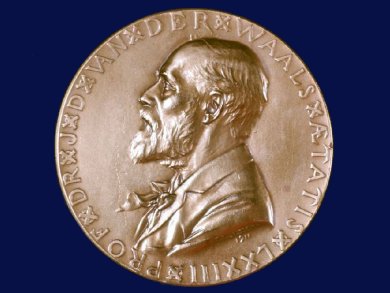The Organization for the Prohibition of Chemical Weapons (OPCW) has been awarded the Nobel Peace Prize 2013 “for its extensive efforts to eliminate chemical weapons“.
The Organization for the Prohibition of Chemical Weapons was established in 1997 and its headquarters are in The Hague, Netherlands. It currently has 189 member states, which represent about 98 % of the global population and landmass and 98 % of the worldwide chemical industry.
The goal of OPWC is to implement the Chemical Weapons Convention (CWC). In implementing this conventation OPWC works towards destroying all existing chemical weapons. It also monitors chemical industry to prevent new weapons from emerging and provides assistance and protection to member states against chemical threats. Its final goal is to foster international cooperation to strengthen the implementation of the Convention and promote the peaceful use of chemistry.
The OPCW is the organization that is currently overseeing the destruction of Syria’s chemical weapons. The use of chemical weapons in the current civil unrest in Syria has emphasized the importance of eradicating chemical weapons.
Book chapters by OPCW:
- Sampling and Analysis in the Chemical Weapons Convention and the OPCW Mobile Laboratory,

Charles Nyanyira,
Chemical Weapons Convention Chemicals Analysis: Sample Collection, Preparation and Analytical Methods,
Markku Mesilaakso (Ed.),
John Wiley & Sons Ltd., Hoboken, USA 2005.
DOI: 10.1002/0470012285.ch2 - On-Site Analysis by the Inspection Team. Sampling, Analysis, Equipment, Procedures and Strategies,

Sabine Krüger,
Chemical Weapons Convention Chemicals Analysis: Sample Collection, Preparation and Analytical Methods,
Markku Mesilaakso (Ed.),
John Wiley & Sons Ltd., Hoboken, USA 2005.
DOI: 10.1002/0470012285.ch3 - The OPCW Gas Chromatograph/Mass Spectrometer for On-Site Analysis. Instrumentation, AMDIS Software and Preparations for Use Chemical Weapons Convention Chemicals Analysis: Sample Collection, Preparation and Analytical Methods,

Mieczyslaw Sokolowski,
Chemical Weapons Convention Chemicals Analysis: Sample Collection, Preparation and Analytical Methods,
Markku Mesilaakso (Ed.),
John Wiley & Sons Ltd., Hoboken,USA 2005.
DOI: 10.1002/0470012285.ch4 - A Comprehensive Review of the Official OPCW Proficiency Test,

Jeanet Hendrikse,
Chemical Weapons Convention Chemicals Analysis: Sample Collection, Preparation and Analytical Methods,
Markku Mesilaakso (Ed.),
John Wiley & Sons Ltd., Hoboken, USA 2005.
DOI: 10.1002/0470012285.ch6 - The OPCW Central Analytical Database,

Charles Nyanyira,
Chemical Weapons Convention Chemicals Analysis: Sample Collection, Preparation and Analytical Methods,
Markku Mesilaakso (Ed.),
John Wiley & Sons Ltd., Hoboken, USA 2005.
DOI: 10.1002/0470012285.ch7
Also of interest:
- Nobel Prize in Chemistry 2013
Martin Karplus, Michael Levitt, and Arieh Warshel, all USA, were awarded - Nobel Prize in Physiology or Medicine 2013
James E. Rothman, Randy W. Schekman, and Thomas C. Südhof have been awarded the 2013 Nobel Prize - Nobel Prize in Physics 2013
Francois Englert, University Libre de Bruxelles, and Peter W. Higgs, University of Edinburgh, have been awarded
Relevant publications:
- Detection and Screening of Chemicals Related to the Chemical Weapons Convention,
George M. Murray,
Encyclopedia of Analytical Chemistry 2013.
DOI: 10.1002/9780470027318.a0403.pub2 - Worldwide Governmental Efforts to Locate and Destroy Chemical Weapons and Weapons Materials,

Ralf Trapp,
Annals of the New York Academy of Sciences 2006, 1076, 527–539,
DOI: 10.1196/annals.1371.040 - Investigations of chemical warfare agents and toxic industrial compounds with proton-transfer-reaction mass spectrometry for a real-time threat monitoring scenario,

Thomas Kassebacher, Philipp Sulzer, Simone Jürschik, Eugen Hartungen, Alfons Jordan, Achim Edtbauer, Stefan Feil, Gernot Hanel, Stefan Jaksch, Lukas Märk, Chris A. Mayhew and Tilmann D. Märk,
Rapid Commun. Mass Spec. 2013, 27, 325–332.
DOI: 10.1002/rcm.6456 - Chemical Warfare Agents: Their Past and Continuing Threat and Evolving Therapies Part I of II,

Kathleen J. Smith, Henry Skelton,
SKINmed: Dermatology for the Clinician 2003, 2, 215–222,
DOI: 10.1111/j.1540-9740.2003.02509.x - Chemical Warfare Agents: Their Past and Continuing Threat and Evolving Therapies Part II of II,

Kathleen J. Smith, Henry Skelton,
SKINmed: Dermatology for the Clinician 2003, 2, 297–303,
DOI: 10.1111/j.1540-9740.2003.03021.x - The challenge of destroying chemical weapons,

Paul F. Walker,
Federal Facilities Environmental Journal 2000, 11, 135–140,
DOI: 10.1002/ffej.3330110214 
CBRN Protection: Managing the Threat of Chemical, Biological, Radioactive and Nuclear Weapons
Andre Richardt (Ed.), Birgit Hulseweh (Ed.), Bernd Niemeyer (Ed.), Frank Sabath (Ed.)
Wiley-VCH, Weinheim, Germany, 2012.
ISBN: 978-3-527-32413-2
Other relevant publications by Wiley can be found on Wiley Online Library.




